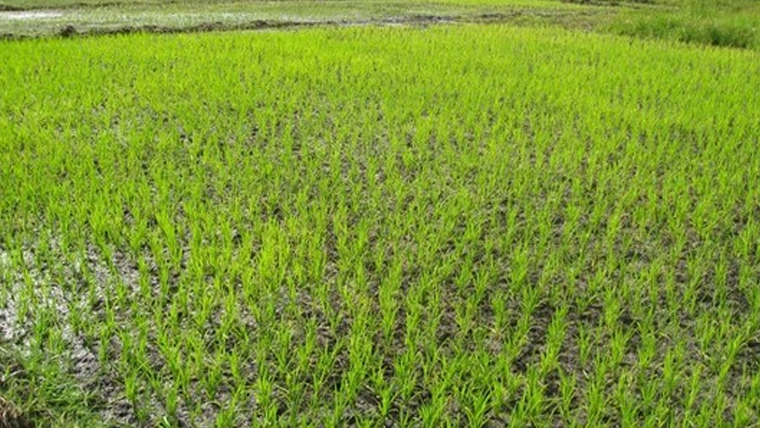
Abirami
A small island nation located in the Indian Ocean off the eastern coast of Africa, Comoros has a low-income economy that is heavily dependent on agriculture, fishing, and remittances from Comorian communities abroad. When the agriculture and fishing sectors are equipped with challenges, the country is struggling to get away from economic distress.
Agriculture is the mainstay of the Comoros economy, employing a significant portion of the population. The primary agricultural products include vanilla, cloves, ylang-ylang, coconuts, bananas, and cassava. Vanilla is particularly important and is one of the major export crops. Comoros is known for producing high-quality vanilla, and it is one of the world’s top vanilla producers. These products are mainly exported and contribute to the country’s foreign exchange earnings. The top exports of Comoros -including various other sectors’ products- are Cloves ($18.9M), Tug Boats ($12.4M), Essential Oils ($10.3M), Scrap Vessels ($5.73M), and Vanilla ($5.57M). The country exports mostly to India ($12.8M), Greece ($12.7M), and France ($8.12M).
In addition to cash crops, subsistence farming plays a crucial role in the agriculture sector. Small-scale farmers grow a variety of crops, including staples like rice, maize, millet, beans, and vegetables, to meet the food needs of the population. Subsistence farming provides food security and livelihoods for many rural communities here.
The agriculture sector in Comoros faces several challenges that hinder its development and productivity. Fragmented land ownership, susceptibility to climate change impacts, and reliance on rainfed agriculture are some of them. Despite the country’s comparatively high annual precipitation of around 2,000 mm, many regions lack adequate dams and reservoirs, making surface water for cultivation inadequate. Food production is hampered during the dry season as a result. Despite having strong agricultural potential and an increasing number of initiatives to support it, low levels of mechanisation, a lack of infrastructure, challenges with transit between islands, and food preservation methods continue to hinder food production.
Additionally, the nation lacks the expertise to manage post-harvests, which causes significant post-harvest losses in the industry. The country’s agricultural potential and soil capabilities were also not well understood, which resulted in ineffective methods.
The Comorian government has recognized the importance of the agriculture sector and has implemented initiatives to support farmers and promote agricultural development. Efforts have been made to improve irrigation systems, provide training and technical assistance to farmers, and enhance market access for agricultural products. The government also encourages agroforestry practices and the adoption of sustainable farming techniques. One of the major initiatives is the project of “Enhancing the agricultural capacity in the Union of the Comoros”.
In collaboration with the South African Agricultural Research Council (ARC) and the United Nations Development Programme (UNDP), the Comoros government identified potential areas where assistance may be given to solve such challenges. Based on a preliminary qualitative survey, the project “Enhancing the agricultural capacity in the Union of the Comoros” was created to enhance the added value and production conditions of agricultural goods, so assisting in the elimination of poverty and ensuring the population’s access to food and nutrition. It was done by coordinating efforts to improve soil fertility, choose appropriate vegetable varieties, build an irrigation system at the chosen site of Mimbani on the island of Mohéli, and encourage commercialization. The initiative made sure that all of the successful operations carried out in Mohéli were duplicated on the other two islands including Grande Comore and Anjouan.
‘Strengthening the Resilience of Climate-Smart Agricultural Systems and Value Chains in the Union of Comoros’, ‘Family Farming Productivity and Resilience Support Project (PREFER)’ and ‘Enhancing Adaptive Capacity for Increased Resilience to Climate Chane in the Agricultural Sector’ are some other major initiatives in the sector.
The challenges and the government initiatives reflect that there are plenty of opportunities for investment in the agriculture sector of Comoros, particularly in agro-processing, value addition, and agricultural infrastructure development. Investments in modern farming techniques, irrigation systems, post-harvest handling, and agribusiness ventures are possibilities for private investors. This is relevant in light of the fact that the country relies heavily on foreign aid to support its economy and development projects. International organizations and donor countries provide financial assistance to improve infrastructure, healthcare, education, and other sectors in the country.
The fishing industry is also an important sector in Comoros, providing employment and contributing to the economy. Tuna, octopus, and shrimp are the main fishery resources in the region. However, the fishing sector faces challenges such as illegal fishing, overfishing, and lack of modern infrastructure.
Remittances from Comorian communities living abroad play a crucial role in supporting the country’s economy. Many Comorians migrate to countries like France, Madagascar, and Réunion in search of better economic opportunities. The money they send back to their families in Comoros helps in improving their livelihoods.
Comoros has significant potential for tourism due to its natural beauty, including pristine beaches, coral reefs, and volcanic landscapes. However, the tourism industry is relatively underdeveloped, mainly due to limited infrastructure, political instability, and a lack of marketing efforts. Efforts have been made in recent years to promote tourism and attract international visitors.
Overall, Comoros faces various economic challenges, including a small domestic market, limited diversification, vulnerability to external shocks, high unemployment rates, and inadequate infrastructure. The country has been working on economic reforms and seeking foreign investment to address these challenges and promote economic growth.





